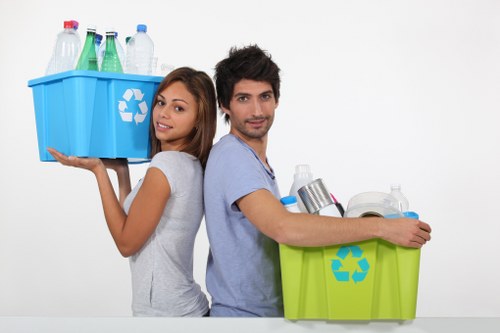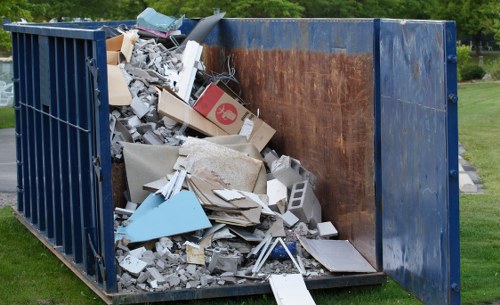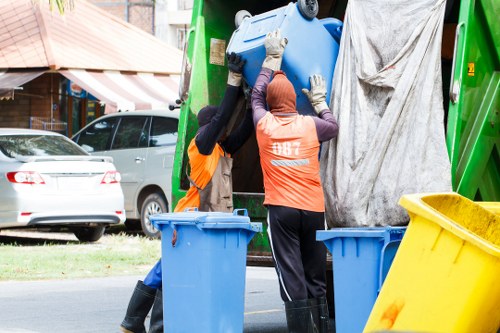Effective Construction Waste Disposal in Battersea

Introduction to Construction Waste Disposal
Construction projects in Battersea generate a significant amount of waste, which poses environmental and logistical challenges. Proper construction waste disposal is essential not only for maintaining the aesthetic and structural integrity of the area but also for promoting sustainable practices.
Understanding the types of waste produced and the methods for disposing of them can help contractors and residents manage construction activities more effectively. This article delves into the best practices for construction waste disposal in Battersea, highlighting regulatory requirements, recycling options, and disposal solutions.
By implementing efficient waste management strategies, Battersea can reduce its environmental footprint and contribute to a cleaner, greener community.

Types of Construction Waste
Common Waste Materials
Construction sites produce a variety of waste materials, including:
- Concrete and Bricks: Often leftover from demolition or construction.
- Wood and Timber: Includes framing, pallets, and scrap wood.
- Metals: Such as steel beams, rebar, and aluminum.
- Plastics and Glass: From packaging materials and broken windows.
- Drywall and Insulation: Scrap gypsum boards and insulating materials.
Each type of waste requires specific disposal methods to ensure environmental safety and compliance with local regulations.

Regulatory Framework in Battersea
Local Regulations
Battersea, as part of London, adheres to stringent waste management regulations to control construction waste disposal. The local council mandates proper waste handling to minimize environmental impact.
Key Regulations
- Waste Hierarchy Compliance: Prioritizing reduction, reuse, and recycling before disposal.
- Licensing Requirements: Contractors must obtain permits for waste removal and processing.
- Reporting Obligations: Regular reporting of waste types and quantities is required.
Impact of Non-Compliance
Failure to comply with these regulations can result in hefty fines, project delays, and reputational damage for contractors.

Recycling and Reuse Strategies
Maximizing Resource Efficiency
Implementing effective recycling and reuse strategies is crucial for sustainable construction waste disposal in Battersea.
- Material Sorting: Separating waste at the source to streamline recycling processes.
- Recycling Facilities: Utilizing local facilities that process specific materials like metals and concrete.
- Reuse Centers: Donating or selling reusable materials to reduce landfill dependency.
These strategies not only reduce waste volume but also lower disposal costs and support the circular economy.

Disposal Solutions
Choosing the Right Disposal Method
Selecting appropriate disposal methods is essential for managing construction waste in Battersea effectively.
- Landfills: For non-recyclable and hazardous waste, though minimizing their use is preferable.
- Incineration: Controlled burning of waste materials to reduce volume, with energy recovery options.
- Transfer Stations: Temporary facilities where waste is collected before being transported to final disposal sites.
Each method has its advantages and limitations, and the choice depends on the type and volume of waste generated.
Best Practices for Waste Management
Implementing Sustainable Practices
Adopting best practices ensures that construction waste disposal in Battersea is both efficient and environmentally responsible.
- Comprehensive Planning: Developing a waste management plan at the project's outset.
- Training and Education: Ensuring all team members understand waste handling protocols.
- Regular Audits: Monitoring waste disposal processes to identify areas for improvement.
These practices help in maintaining compliance, reducing costs, and achieving sustainability goals.
Innovative Technologies in Waste Disposal
Embracing Modern Solutions
Technology plays a pivotal role in enhancing construction waste disposal in Battersea.
- Waste Tracking Software: Helps in monitoring waste generation and disposal in real-time.
- Automated Sorting Systems: Increases efficiency in separating recyclable materials.
- Eco-friendly Materials: Using materials that produce less waste or are easier to recycle.
Incorporating these technologies can lead to more effective waste management and contribute to environmental sustainability.
Challenges and Solutions
Overcoming Disposal Obstacles
Managing construction waste disposal in Battersea comes with its set of challenges, including space constraints, high disposal costs, and regulatory compliance.
- Space Constraints: Utilize vertical storage solutions and on-site compactors to maximize space.
- High Disposal Costs: Optimize waste sorting to increase recycling rates and reduce landfill use.
- Regulatory Compliance: Stay updated with local laws and invest in training to ensure adherence.
Addressing these challenges requires a proactive approach and collaboration with waste management professionals.
The Role of Contractors
Responsibilities in Waste Management
Contractors play a crucial role in construction waste disposal in Battersea. Their responsibilities include:
- Waste Segregation: Ensuring proper separation of different waste types.
- Vendor Selection: Choosing reliable waste disposal and recycling partners.
- Documentation: Maintaining accurate records of waste disposal activities.
By fulfilling these responsibilities, contractors contribute to a more sustainable construction process.
Environmental Impact
Understanding the Consequences
The environmental impact of improper construction waste disposal in Battersea can be severe, including pollution, habitat destruction, and increased greenhouse gas emissions.
- Pollution: Illegal dumping can contaminate soil and water sources.
- Habitat Destruction: Waste accumulation disrupts local ecosystems.
- Greenhouse Gas Emissions: Decomposing waste in landfills releases methane, a potent greenhouse gas.
Therefore, responsible waste management is essential to mitigate these impacts and preserve Battersea’s environment.
Community Involvement
Engaging Local Residents
Community involvement is key to successful construction waste disposal in Battersea. Engaging local residents can lead to more effective waste management through:
- Awareness Campaigns: Educating the community about the importance of proper waste disposal.
- Feedback Mechanisms: Encouraging residents to report illegal dumping and suggest improvements.
- Collaborative Projects: Partnering with local organizations for waste reduction initiatives.
Active community participation fosters a collective responsibility towards maintaining a clean and sustainable environment.
Future Trends
Looking Ahead
The future of construction waste disposal in Battersea is shaped by advancements in technology, evolving regulations, and increasing environmental awareness.
- Circular Economy: Emphasizing the reuse and recycling of materials to create a closed-loop system.
- Smart Waste Management: Leveraging IoT and data analytics to optimize waste collection and processing.
- Sustainable Materials: Developing and utilizing materials that are easier to recycle and have a lower environmental impact.
Embracing these trends will lead to more efficient and sustainable waste disposal practices in Battersea.
Conclusion
Taking Action
Effective construction waste disposal in Battersea is a multifaceted challenge that requires collaboration, innovation, and adherence to regulations. By implementing best practices, embracing new technologies, and engaging the community, Battersea can achieve sustainable waste management.
Don’t wait to make a positive impact. Contact us today to learn how you can manage your construction waste more effectively and contribute to a greener Battersea.